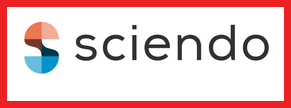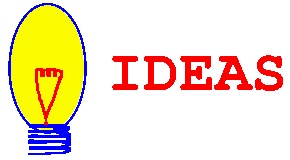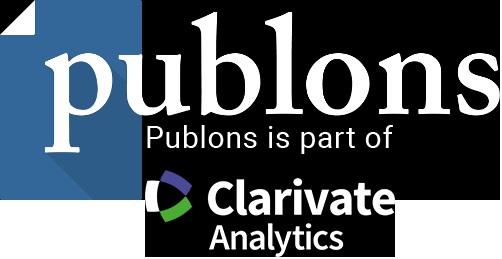THE ECONOMIC INFLUENCE ON CONSUMERS BUYING BEHAVIOR IN ISLAMIC COUNTRIES: EVIDENCE FROM THE COVID-19 ECONOMIC CRISIS
DOI:
https://doi.org/10.2478/eoik-2021-0003Keywords:
Consumer, Panic Buying, Covid-19, Depression, Economy, Health, Lockdown, and Islamic CountriesAbstract
The Covid-19 pandemic has ushered in a new age in the world. We are still grappling with the implications in various areas of our everyday lives. The impulsive buying habits of consumers, the supply chain, and the whole industry are not exceptions. Consumers and supply chains were both unprepared during the early stages of the novel coronavirus pandemic. The procurement of utilitarian products was referred to as panic buying. The study examined using exploratory studies on several individuals in the eight selected Islamic countries who have been panic buying in coronavirus-affected areas and have faced regional constraints. The data apply on exploratory factor analysis (EFA) in eight selected Islamic countries, three hundred sample finally selected, and a good number of volunteers supported in this study. The results have shown that a drastic financial effect on the economy where purchasing power and remittance inflow declined, inflation goes up and precaution for lockdown, whereas impulsive buying goods tendency increased due to misinformation, and panic buying immensely impact in the economy. The decision-making process has shifted, preventing financial burdening, rising saving patterns, and unwelcoming unhealthy consumption. Moreover, visible psychological distress, depression, anxiety, and posttraumatic stress. These studies concluded with a policy recommendation providing the results.
References
Abdul, Mohani and Ismail, Hashanah and Hashim, Haslina and Johari, Juliana. (2009). Consumer decision making process in shopping for halal food in Malaysia. China-USA Business Review, 8 (9). pp. 40-47. ISSN 1537-1514
Accenture. (2020). COVID-19 will permanently change consumer behavior. Retrieved at https://www.accenture.com/us-en/insights/consumer-goods-services/coronavirusconsumer-behavior-research (accessed at 28.03.2020).
A.E. Gamma, J. Slekiene, H.J. Mosler (2020). The impact of various promotional activities on Ebola prevention behaviors and psychosocial factors predicting Ebola prevention behaviors in the Gambia evaluation of Ebola prevention promotions; Int. J. Environ. Res. Publ. Health, 16 (11) (2020), p. 2020
Ajzen, I. (2011). The theory of planned behavior: Reactions and reflections. Psychology & Health, 26(9), 1113–1127.
Alam, S. S., Mohd, R., & Hisham, B. (2011). Is religiosity an important determinant on Muslim consumer behavior in Malaysia? Journal of Islamic Marketing, 2(1), 83–96.
Albelaikhi, A. A. (1988). Religious Orientation and Fear of Death among Muslim and Christian Individuals. University of Rhode Island, Psychology Department, Kingston.
Al-Debei, M. M., Akroush, M. N., & Ashouri, M. I. (2015). Consumer attitudes towards online shopping. Internet Research, 25(5), 707–733. doi:10.1108/IntR-05-2014–0146
Allport, G. W., and Ross, J.M. (1967). Personal Religious Orientation and Prejudice. Journal of Personality and Social Psychology, 5, 432-443.
Almond, D. (2006). Is the 1918 Influenza Pandemic Over? Long-term Effects of in Utero Influenza Exposure in the Post-1940 US population. Journal of Political Economy, 114(4), 672–712.
Anderson, R. C., Fell, D., Smith, R. L., Hansen, E. N., & Gomon, S. (2005). Current Consumer behavior research in forest products. Forest Products Journal, 55(1), 21-27.
Anderson, L., & Wadkins, M. (1991). Japan: A culture of consumption? Advances in Consumer Research, 18, 129–134.
Baker, S. R., Bloom, N., Davis, S. J., Kost, K., Sammon, M., & Viratyosin, T. (2020b). The Unprecedented Stock Market Reaction to COVID-19 . National Bureau of Economic Research Working Paper, Number 26945.
Bangladesh Bureau of Statistics. (2020). Statistics and informatics division (SID). Retrieved at http://www.bbs.gov.bd/
Beatty, S. E., & Kahle, L. R. (1988). Alternative hierarchies of the attitude-behavior relationship: The impact of brand commitment and habit. Journal of the Academy of Marketing Science, 16(2), 1–10.
Berné, C., Múgica, J. M., Pedraja, M., & Rivera, P. (2001). Factors involved in price informationseeking behavior. Journal of Retailing and Consumer Services, 8(2), 71–84. https://doi.org/https://doi.org/10.1016/S0969-6989 (99)00027-2
Billore, S., & Anisimova, T. (2021). Panic buying research: A systematic literature review and future research agenda. International Journal of Consumer Studies, Available at: ijcs.12669. doi: https://doi.org/10.1111/ijcs.12669
Bloomberg News. (2020). China’s Harbin Tightens Quarantine Measures against Covid-19. Bloomberg.https://www.bloomberg.com/news/articles/2020-04-12/china-s-harbintightens-quarantine-measures-against-Covid-19 .
Brahmbhatt , M., & Dutta, A. (2008). On SARS Type Economic Effects during Infectious Disease Outbreaks. Te World Bank Policy Research Working Paper Number 4466. http://documents.worldbank.org/curated/en/101511468028867410/On-SARS-typeeconomic-effects-during-infectious-disease-outbreaks
Brainerd, E., & Siegler, M. V. (2003). The Economic Effects of the 1918 Influenza Epidemic. CEPR Discussion Paper Number 3791.
Burns, A., Mensbrugghe, D., & Timmer, H. (2006). Evaluating the Economic Consequences of Avian Influenza, in Global Development Finance. The World Bank. , 1(1). http://documents.worldbank.org/curated/en/977141468158986545/Evaluating-theeconomic-consequences-of-avian-influenza
CFO Insights. (2020). Investor relations: Adapting to the COVID-19 next normal. [Financial Advisory Services]. Deloitte. https://www2.deloitte.com/us/en/pages/fnance/articles/cfoinsights-investor-relations-adapting-to-the-Covid-19-next-normal.html (accessed 16.06.2020).
Chen, Y., & Barnes, S. (2007). Initial trust and online buyer behavior. Industrial Management & Data Systems, 107(1), 21–36. doi:10.1108/02635570710719034
Chinazzi, M., Davis, J. T., Ajelli, M., Gioannini, C., Litvinova , M., Merler, S., Piontti, A. P., MU, K., Rossi, L., SUN, K., & Viboud, C. (n.d.). The effect of travel restrictions on the spread of the 2019 novel coronavirus (COVID-19 ) outbreak. Science. https://doi.org/10.1126/science.aba9757
Chou, J., Kuo, N.-F., & Peng, S.-L. (2004). Potential Impacts of the SARS Outbreak on Taiwan’s Economy. Asian Economic Papers, 3(1), 84–112.
Chu, M. M. (2020, June 8). Malaysia to reopen most economic activity with virus outbreak ’under control. The Jakarta Post. https://www.thejakartapost.com/seasia/2020/06/08/malaysia-toreopen-most-economic-activity-with-virus-outbreak-under-control.html
Clemens, K. S., Matkovic, J., Faasse, K., & Geers, A. L. (2020). Determinants of safety-focused product purchasing in the United States at the beginning of the global COVID-19 pandemic. Safety Science, 130, 104894. https://doi.org/10.1016/j.ssci.2020.104894
Cogley, M. (2020).Has social media turbocharged panic buying by UK shoppers? Available at: https://www.telegraph.co.uk/technology/2020/03/10/has-social-media-turbochargedpanic-buying-uk-shoppers/ (2020)
Correia, S., Luck, S., & Verner, F. (2020). Pandemics Depress the Economy, Public Health Interventions Do Not: Evidence from the 1918 Flu. Stanford Graduate School of Business. https://www.gsb.stanford.edu/sites/gsb/fles/fn_04_20_verner.pdf
Crabbe, M. (2020, March 3). Research your way out of a crisis: COVID-19 ’s effect on consumer behavior. [Marketing Research]. Mintel. https://www.mintel.com/blog/consumer-marketnews/research-your-way-out-of-a-crisis-Covid-19 s-effect-on-consumer-behaviour
Cronbach, L.J. (1951). Coefcient alpha and the internal structure of tests. Psychometrika, Vol. 16. No. 3, pp. 297-334, available at: http://dx.doi.org/10.1007/BF02310555
Davis, F. D. (1989). Perceived usefulness, perceived ease of use, and user acceptance of information technology. MIS Quarterly, 13(3), 319–340.
Delener, N. (1990a). The Effects of Religious Factors on Perceived Risk In Durable Goods. Journal of Consumer Marketing, 7(3) 27.
Dela, G.A. (2020). How social media is shaping our fears of — and response to — the coronavirus Available at: https://time.com/5802802/social-media-coronavirus/ (2020)
Dooley, K. J., Yan, T., Mohan, S., & Gopalakrishnan, M. (2010). Inventory management and the bullwhip effect during the 2007–2009 recession: Evidence from the manufacturing sector. Journal of Supply Chain Management, 46(1), 12–18.
Dowd, K., & Burke, K. J. (2013). The influence of ethical values and food chIslamice motivations on intentions to purchase sustainably sourced foods. Appetite, 69, 137–144.
Dunn, K. I., Mohr, P., Wilson, C. J., & Wittert, G. A. (2011). Determinants of fast-food consumption. An application of the theory of planned behavior. Appetite, 57(2), 349–357.
Dziuban, C.D. and Shirkey, E.C. (1974). When a correlation matrix is appropriate for factor analysis?. Some decision rules”, Psychological Bulletin, Vol. 81 No. 6, pp. 358-361, doi: 10.1037/h0036316.
El Dahshan, M. (2020). How has Egypt navigated the ongoing global economic fallout as a result of COVID-19 ? The Tahrir Institute for Middle East Policy. https://timep.org/commentary/analysis/how-has-egypt-navigated-the-ongoing-globaleconomic-fallout-as-a-result-of-Covid-19/
Ellis-Petersen, H., & Ratcliffe, R. (2020). Super-cyclone Amphan hits coast of India and Bangladesh. The Guardian. https://www.theguardian.com/world/2020/may/20/super-cyclone-amphanevacuations-in-india-and-bangladesh-slowed-by-virus (Accessed 20 May, 2020).
Emam, A. (2020, March 29). COVID-19 comes with a high cost to Egyptian economy. The Arab Weekly. https://thearabweekly.com/Covid-19-comes-high-cost-egyptian-economy
Evans, O. (2020). Socio-economic impacts of novel coronavirus: The policy solutions. BizEcons Quarterly, 7, 3–12.
FAO. (2013). Food wastage footprint: Impact on natural resources. Summary report. Rome: FAO. . http://www.fao.org/3/i3347e/i3347e.pdf
Feng, C., & FAY, S. (2020). Store closings and retailer profitability: A contingency perspective. Journal of Retailing. https://doi.org/10.1016/j.jretai.2020.01.002.
Feng, C., & Fay, S. (2020). Store closings and retailer profitability: A contingency perspective. Journal of Retailing. https://doi.org/10.1016/j.jretai.2020.01.002.
Fernandes, N. (2020). Economic effects of coronavirus outbreak (COVID-19 ) on the world economy. 1–30. Retrieved at: https://mediaroom.iese.edu/wp-content/uploads/2020/03/FernandesNuno_20200322-Global-Recession-is-inevitable.pdf (Accessed March, 2020).
Fornaro, L., & Wolf, M. (2020). Covid-19 Coronavirus and Macroeconomic Policy: Some Analytical Notes. London: Center for Economic Policy Research. https://cepr.org/active/publications/discussion_papers/dp.php?dpno=14529
Foxall, G. R. (1979). Industrial Buying During Recession: Farmers’ Tractor Purchases, 1977–78. Management Decision, 17(4), 317-325
Garrett, T. (2008). Pandemic Economics: The 1918 Influenza and its Modern-Day Implications. Federal Reserve Bank of St. Louis Review, 90(2), 75–93.
Garrett, Tomas A. (2006) “War and Pestilence as Labor Market Shocks: U.S. Manufacturing Wage Growth 1914-1919.” Working Paper 2006-018C, Federal Reserve Bank of St. Louis, 2006. Forthcoming in Economic Inquiry. Available at: https://fles.stlouisfed.org/fles/htdocs/publications/review/08/03/Garrett.pdf
Guimbeau, A., Menon, N., & Musacchio, A. (2020). The Brazilian Bombshell? The Long-Term impact of the 1918 Influenza Pandemic the South American Way. National Bureau of Economic Research Working Paper. https://www.nber.org/papers/w26929
Gustavsson, J., Cederberg , C., Sonesson, U., Otterdijk, R. V., & Meybeck, A. (2011). Global food losses and food waste. Extent, causes and prevention. Rome: FAO. Food and Agriculture Organization. https://www.fao.org/3/a-i2697e.pdf (Accessed 10 March 2020).
Hai, W., Z. Zhao, Wang, J., Hao, Z-G. (2004). the Short-Term Impact of SARS on the Chinese Economy. Asian Economic Papers 3(1), 57-61.
Hajj 2020: The economic impact of the Saudi ban on international pilgrims. (2020, June 24). TRT World.https://www.trtworld.com/magazine/hajj-2020-the-economic-impact-of-the-saudiban-on-international-pilgrims-37520
Hanudin Amin Abdul-Rahim Abdul-Rahman Dzuljastri Abdul Razak , (2014),”Theory of Islamic consumer behaviour”, Journal of Islamic Marketing, Vol. 5 Iss 2 pp. 273 - 301 Permanent link to this document: http://dx.doi.org/10.1108/JIMA-06-2013-0042
Heckhausen, H., Gollwitzer, P., 1987. Tought contents and cognitive functioning in motivational versus volitional states of mind. Motiv. Emot. 11 (2), 101–120. http://dx.doi.org/10.1007/bf00992338.
Hedgecoe, G., Lowen, M., Williamson, L., Hill, J., Holligan, A., Torpe, N., De, Launey, G., B., Savage, M., & Bateman, T. (2020). Coronavirus capital by capital: How are Europeans coping with shutdown? BBC News. https://www.bbc.co.uk/news/world-europe-52025553 (accessed 26th March 2020).
Hofstede, G. (2001). Culture’s consequences: Comparing values, behaviors, institutions and organizations across nations. Tilburg: SAGE Publications.
Hofstede, G., Hofstede, G. J., & Minkov, M. (2010). Cultures and Organizations: Software of the Mind. New York: McGraw-Hill. Available at: https://www.mintel.com/blog/consumer-market-news/the-next-normal-is-now (Accessed 09.06.2020).
Indonesia braces for bad times, up to 5.2 million may lose jobs. (2020, April 16). New Straits Times. https://www.nst.com.my/world/region/2020/04/584847/indonesia-braces-bad-times-52-million-may-lose-jobs
Iyer, E.S., 1989. Unplanned purchasing: knowledge of shopping environment and time pressure. Journal of Retailing 65 (1), 40–57.
Jordan’s tourism revenues drop by 10.7% in Q1 2020—CBJ. (2020, June 1). The Jordan Times. https://www.zawya.com/mena/en/economy/story/Jordans_tourism_revenues_drop_by_107_in_Q1_2020__CBJ-SNG_175882676/
Karlsson, M., Nilsson, T., & Pichler, S. (2014). The Impact of the 1918 Spanish flu Epidemic on Economic Performance in Sweden: An Investigation into the Consequences of an Extraordinary Mortality Shock. Journal of Health Economics, 36, 1–19.
Karlsson, M., Nilsson, T., & Pichler, S. (2014). The Impact of the 1918 Spanish flu Epidemic on Economic Performance in Sweden: An Investigation into the Consequences of an Extraordinary Mortality Shock. Journal of Health Economics, 36, 1–19.
Keane, M., & Neal, T. (2021). Consumer panic in the COVID-19 pandemic. Journal of Econometrics, 220(1), 86–105. https://doi.org/10.1016/j.jeconom.2020.07.045
Keogh‐Brown, M. R., & Smith, R. D. (2008). The Economic Impact of SARS: How Does the Reality Match the Predictions? Health Policy, 88(1), 110–120.
Kostova, D., Cassell, C.H., Redd, J. T., Williams, D. E., Singh, T., Martel, L.D., & Bunnell, R.E. (2019.). Long‐ distance effects of epidemics: Assessing the link between the 2014 West Africa Ebola outbreak and U.S. exports and employment. Health Economics, 28, 1248–1261.
Kirk, C. P., & Rifin, L. S. (2020). I’ll trade you diamonds for toilet paper: Consumer reacting, coping and adapting behaviors in the COVID-19 pandemic. Journal of Business Research, 117, 124–131. Doi: https://doi.org/10.1016/j.jbusres.2020.05.028
Lamming, R. (2000). Japanese supply chain relationships in recession. Long Range Planning, 33(6), 757-778
Laato, S., Islam, A. N., & Laine, T. H. (2020). Did location-based games motivate players to socialize during COVID-19 ? Telematics and Informatics, 54, 101458.
Laato, S., Islam, A. K. M. N., & Laine, T. H. (2020). Did location-based games motivate players to socialize during COVID-19 ? Telematics and Informatics, 54, 101458. https://doi.org/10.1016/j.tele.2020.101458
Leduc, S., & Liu, Z. (2020, March 30). The Uncertainty Channel of the Coronavirus, Federal Reserve Bank of San Francisco Letter, Number 2020-07. https://www.frbsf.org/economic-research/publications/economic-letter/2020/march/uncertainty-channel-of-coronavirus/
Lee, J., & McKibbin, W. (2004). Globalization and Disease: The Case of SARS. . Asian Economic Papers, 3(1), 113–131.
Liu, J.-T., Hammitt, J. K., Wang, J.-D., & Tsou, M.-W. (n.d.). Valuation of the risk of SARS in Taiwan. Health Economics, 14, 83–91.
Mathieson, K. (1991). Predicting user intentions: comparing the technology acceptance model with the theory of planned behavior. Information systems research, 2(3), 173-191.
Mahmood, M. (2020, June 13). Covid-19 : Economic challenges facing Bangladesh. The Financial Express. https://thefnancialexpress.com.bd/views/Covid-19 -economic-challenges-facingbangladesh-1592064588
McIntosh, M. (2020). How 2020’s Oil Prices Will Challenge Saudi Arabian Economic Diversification. Atlas Institute for International Affairs. https://www.internationalaffairshouse.org/how-2020s-oil-prices-will-stall-saudi-arabian-economic-diversifcation/
McKibbin, W., Fernando, R. (2020a). The Global Macroeconomic Impacts of COVID-19 : Seven Scenarios, Washington: Brookings Institution.
Meltzer M.I., Cox N.J, Fukuda K. (1999). The economic impact of pandemic influenza in the UnitedStates: priorities for intervention. Emerging Infectious Disease, 5(5), 659–71
Mogelonsky, Marcia (2020). The ‘Next Normal’ Is Now. Mintel.
Naeem, M. (2020). Do social media platforms develop consumer panic buying during the fear of Covid-19 pandemic? Journal of Retailing and Consumer Services, 58, 102226.
Naeem, M. (2021). Do social media platforms develop consumer panic buying during the fear of Covid-19 pandemic. Journal of Retailing and Consumer Services, 58, 102226. Doi: https://doi.org/10.1016/j.jretconser.2020.102226
Mukit, M. M. H. (2020). An econometric analysis of the macroeconomic determinants impact of gross domestic product (GDP) in Bangladesh. Atlantic Review of Economics, 3(2). http://aroec.org/ojs/index.php/ARoEc/article/view/120
Mukit, M. M. H., Nabila, N. J., Islam, M. S., & Abdel-Razzaq, A. I. (2020). Valuing women entrepreneurship in the informal economy in Bangladesh. Economics, 8(2), 37-54. Oikos Institute - Research Centre. doi: https://doi.org/10.2478/eoik-2020-0020 ; Retrieved at: http://economicsrs.com/index.php/economicus/article/view/178
Murphy, C. et. al. (2020, March). Corona-virus & Behavior Change. [Data Supplier]. www.Ipsos.com; IPSOS. h t t p s : / / w w w. i p s o s . c o m / s i t e s / d e f a u l t / f i l e s / c t / p u b l i c a t i o n / d o c u m e n t s /2020-03/coronavirus-behavior-change-ipsos.pdf (accessed March, 2020)
OECD. (2020). OECD Economic Outlook—June 2020: The world economy on a tightrope. https://www.oecd-ilibrary.org/
Povera, A., Harun, H. N., & Arumugam, T. (2020, May 1). Malaysia has suffered RM63 billion losses due to MCO. New Straits Times. https://www.nst.com.my/news/nation/2020/05/588982/pm-malaysia-has-suffered-rm63-billion-losses-due-mco
Pruett, M. (2020, March 25). Coronavirus Consumer Trends: Consumer Electronics, Pet Supplies, and More [Commerce Marketing]. Criteo. https://www.criteo.com/insights/coronavirus-consumer-trends/
Puccinelli, N., Goodstein, R., Grewal, D., Price, R., Raghubir, P., & Stewart, D. (2009). Customer experience management in retailing: Understanding the buying process. Journal of Retail, 85(1), 15–30. https://doi.org/ http://dx.doi.org/10.1016/j.jretai.2008.11.003.
Rassy, D., & Smith, R. D. (2013). The Economic Impact of H1N1 on Mexico’s Tourist and Pork Sectors. Health Economics, 22, 824–834.
Saeedi, T. A. (2020, May 2). Consumer inflation falls to 8-month low of 8.5 percent. The News. https://www.thenews.com.pk/print/652706-consumer-inflation-falls-to-8-month-low-of-8-5-percent
Saudi Arabia closes schools over coronavirus concerns. (2020, March 9). ARAB NEWS. https://www.arabnews.com/node/1638606/saudi-arabia
Selva Demiralp. (2020). the economic impact of COVID-19 on Turkey. Middle East Institute. https://www.mei.edu/publications/economic-impact-Covid-19-turkey
Sood, J., and Nasu Y. (1995). Religiosity and Nationality: An Exploratory Study of their effects on Consumer Behavior in Japan and Te United States. Journal of Business Research 34, 1-9.
Suki, N. M. (2014). Does celebrity credibility influence Muslim and non-Muslim consumers’ attitudes toward brands and purchase intention? Journal of Islamic Marketing, 5(2), 227–240.
Taylor, J. W. (1974). The role of risk in consumer behavior: A comprehensive and operational theory of risk taking in consumer behavior. Journal of Marketing, 38(2), 54–60
Takor, M., & Prajapati, S. G. (2012). Factors that encourage impulse purchase and impact of visual merchandising on the purchase decision of women for beauty product in Gujrat. . International Journal of Research in Commerce, Economics and Management, 2(9), 7–11.
The Central Bank of Jordan announces a set of procedures aimed to contain the repercussions of the emerging Corona virus impact on the national economy. (2020). the Central Bank of Jordan (CBJ). https://www.cbj.gov.jo/DetailsPage/CBJEN/NewsDetails.aspx?ID=279
Tomas, A., & Garland, R. (2004). Grocery shopping: List and non-list usage. Marketing Intelligence & Planning, 22(6), 623–635. https://doi.org/http://dx.doi.org/10.1108/02634500410559015.
Wang, E., An, N., Gao, Z., Kiprop, E., & Geng, X. (2020). Consumer food stockpiling behavior and willingness to pay for food reserves in COVID-19 . Food Security, 12(4), 739–747. https://doi.org/10.1007/s12571-020-01092-1
V., Rashmi. (2014). Study on impulse buying behavior of fashion-oriented Indian youth with respect to visual merchandising. . International Journal of Management and Social Science Research Review, 1(4), 235–239.
Verma, P., & Verma, R. . (2012). an on-field-survey of the impulse buying behaviour of consumers in consumer non-durable sectors in the retail outlets in the city of Indore, India. Research Journal of Management Sciences, Vol. 1(4), 1-5. . India. Research Journal of Management Sciences, 1(4), 1–5.
Vishnu, P., & Raheem, A. R. (2013). Factors influencing impulse buying behavior. European Journal of Scientific Research, 100(3), 67–79.
World Health Organization (WHO). (2020). Corona virus disease (COVID-19 ) Pandemic. Retrieved at: https://www.who.int/docs/default-source/coronaviruse/situation-reports/20200410-sitrep-81-Covid-19.pdf? Sfvrsn=ca96eb84_2. (Accessed 10 April, 2020).
Yadav, R., & Pathak, G. S. (2016). Young consumers’ intention towards buying green products in a developing nation: Extending the theory of planned behavior. Journal of Cleaner Production, 135, 732–739.
Downloads
Published
How to Cite
Issue
Section
License
Copyright (c) 2021 Oikos Institute - Research Centre

This work is licensed under a Creative Commons Attribution-NonCommercial-NoDerivatives 4.0 International License.























